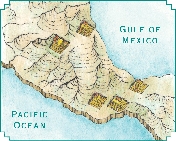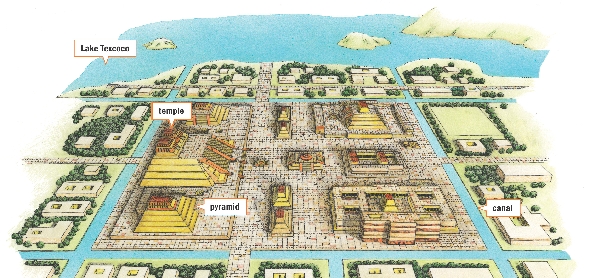“Is This a Dream?”
That’s what Spanish explorers wondered as they entered an amazing city. In the sunlight, the place seemed to float on a shimmering lake. No wonder. The city stood on an island with long, thin roads that linked it to the shore.
Rising above the skyline was a stone pyramid—twenty stories high. Two temples perched on top of it, one bright red and the other deep blue. Dozens of buildings stood around the pyramid. Circling them were thousands of tidy houses and shops. Roads and canals tied everything together.
Awestruck, the Spaniards eyed the city hungrily. They had never seen anything like it.
Proud City, Simple Beginning
What was this eye-popping place? Its name was Tenochtitlán and almost 200,000 Aztec lived there. Tenochtitlán, the largest city in the Americas (North, Central, and South America), was the capital of the powerful Aztec Empire. The gleaming city was designed to impress visitors, and it did.

Aztec Empire, 1500

Tenochtitlán was the central and most powerful city of the Aztec. Today, it is buried under Mexico City.
Lake Texcoco
temple
pyramid
canal